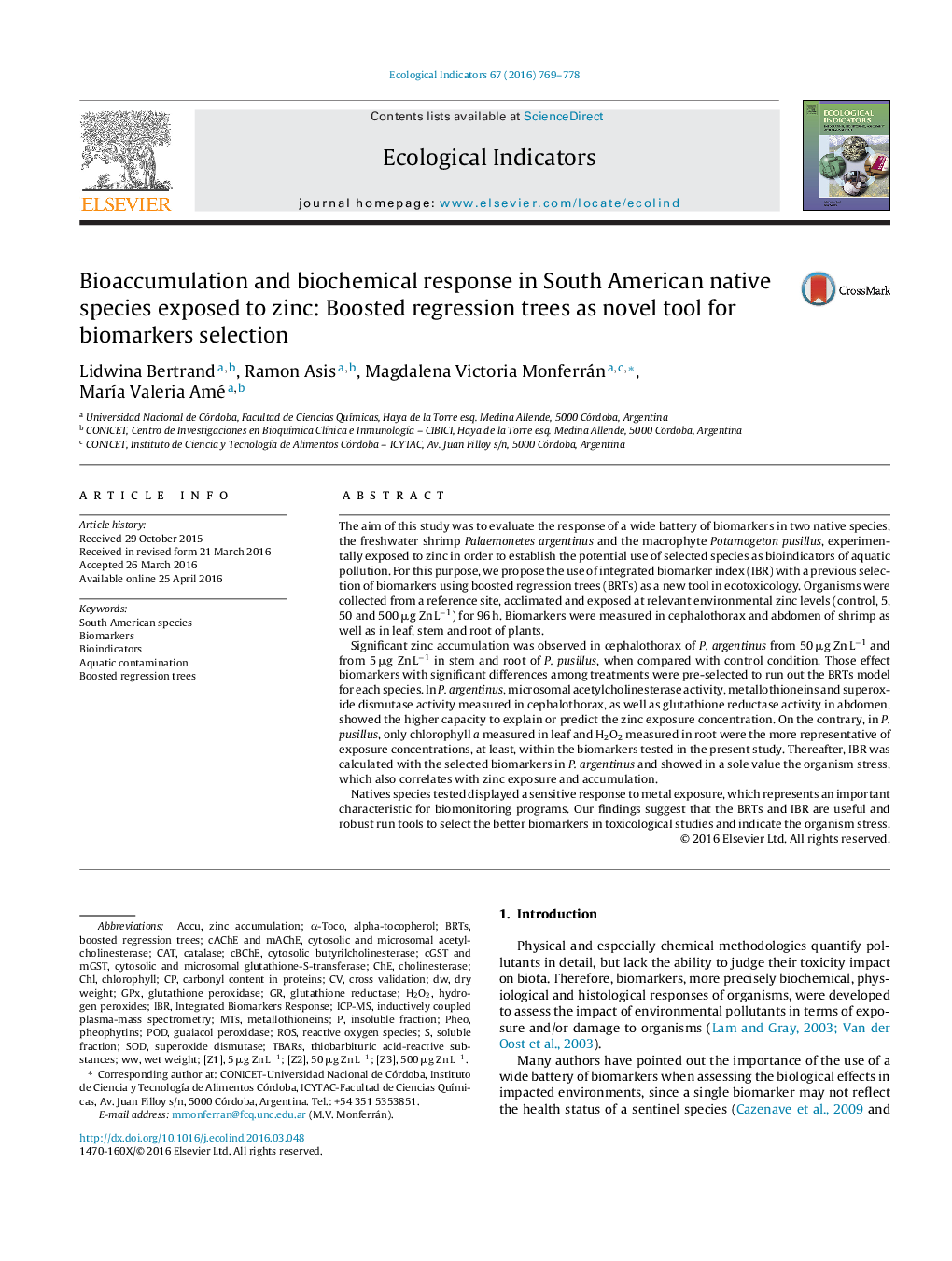| کد مقاله | کد نشریه | سال انتشار | مقاله انگلیسی | نسخه تمام متن |
|---|---|---|---|---|
| 4372922 | 1617135 | 2016 | 10 صفحه PDF | دانلود رایگان |
• Palaemonetes argentinus and Potamogeton pusillus responded to Zn exposure.
• The better biomarkers to explain Zn exposure were chosen by boosted regression trees.
• IBR calculated with selected biomarkers in shrimps, showed the stress of organisms.
The aim of this study was to evaluate the response of a wide battery of biomarkers in two native species, the freshwater shrimp Palaemonetes argentinus and the macrophyte Potamogeton pusillus, experimentally exposed to zinc in order to establish the potential use of selected species as bioindicators of aquatic pollution. For this purpose, we propose the use of integrated biomarker index (IBR) with a previous selection of biomarkers using boosted regression trees (BRTs) as a new tool in ecotoxicology. Organisms were collected from a reference site, acclimated and exposed at relevant environmental zinc levels (control, 5, 50 and 500 μg Zn L−1) for 96 h. Biomarkers were measured in cephalothorax and abdomen of shrimp as well as in leaf, stem and root of plants.Significant zinc accumulation was observed in cephalothorax of P. argentinus from 50 μg Zn L−1 and from 5 μg Zn L−1 in stem and root of P. pusillus, when compared with control condition. Those effect biomarkers with significant differences among treatments were pre-selected to run out the BRTs model for each species. In P. argentinus, microsomal acetylcholinesterase activity, metallothioneins and superoxide dismutase activity measured in cephalothorax, as well as glutathione reductase activity in abdomen, showed the higher capacity to explain or predict the zinc exposure concentration. On the contrary, in P. pusillus, only chlorophyll a measured in leaf and H2O2 measured in root were the more representative of exposure concentrations, at least, within the biomarkers tested in the present study. Thereafter, IBR was calculated with the selected biomarkers in P. argentinus and showed in a sole value the organism stress, which also correlates with zinc exposure and accumulation.Natives species tested displayed a sensitive response to metal exposure, which represents an important characteristic for biomonitoring programs. Our findings suggest that the BRTs and IBR are useful and robust run tools to select the better biomarkers in toxicological studies and indicate the organism stress.
Figure optionsDownload as PowerPoint slide
Journal: Ecological Indicators - Volume 67, August 2016, Pages 769–778
